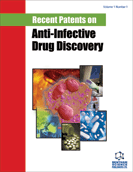Abstract
Alzheimer’s disease (AD) is a neurodegenerative disease affecting geriatric populations for which several causes have been proposed. These include a relationship with known pathogens although the exact nature of such a relationship remains uncertain. Herpes simplex virus-1 has been proposed as potential cause of AD because of its ability to form ß amyloid(Aß) and neurofibrillary tangles due to tau hyperphosphorylation and action of beta & gamma secretase on amyloid precursor protein(APP) together with genetic association with apolipoprotein-E4(ApoE-Ɛ4), which points out to latent Herpes Simplex virus-1 as an agent causing AD. There are numerous studies that linked HSV-1 with AD like anti-HSV-1 IgM antibodies, nectin-2, heme oxygenase-1, phosphorylated eukaryotic initiation factor-2A, caspase-8 and nucleus-specific alteration of raphe neurons. Various possible mechanisms by which HSV-1 might lead to development of AD such as ApoE, ß-amyloid, tau phosphorylation, inflammation and oxidative stress are also discussed. Thus, this review discusses patent information and a strong relationship between latent HSV-1 and AD and also proposes antiviral therapy for AD.
Keywords: Alzheimer’s disease, antiviral therapy, ß-amyloid plaques, biomarkers, herpes simplex virus-1 (HSV-1), inflammation.
 41
41 2
2





















